
Petalonia fascia
Sea Petals, False Kelp
15 March 2024
Kye Bay, Strait of Georgia, B.C., Canada
Tide: 3.1 feet at 16:43 PDT (measured at Little River Tidal Station)
Weather: Partly cloudy (20% cloud cover), wind North 5 to 10 km/hour, sea rippled, humidity 56%, 10 ˚C.
Moon: Waxing Crescent (37.2%, 5 days); Next Phase, First Quarter, 16 March 2024 at 9:10 pm PDT; Previous Phase, New Moon, 10 March 2024 at 1:00 am PDT.
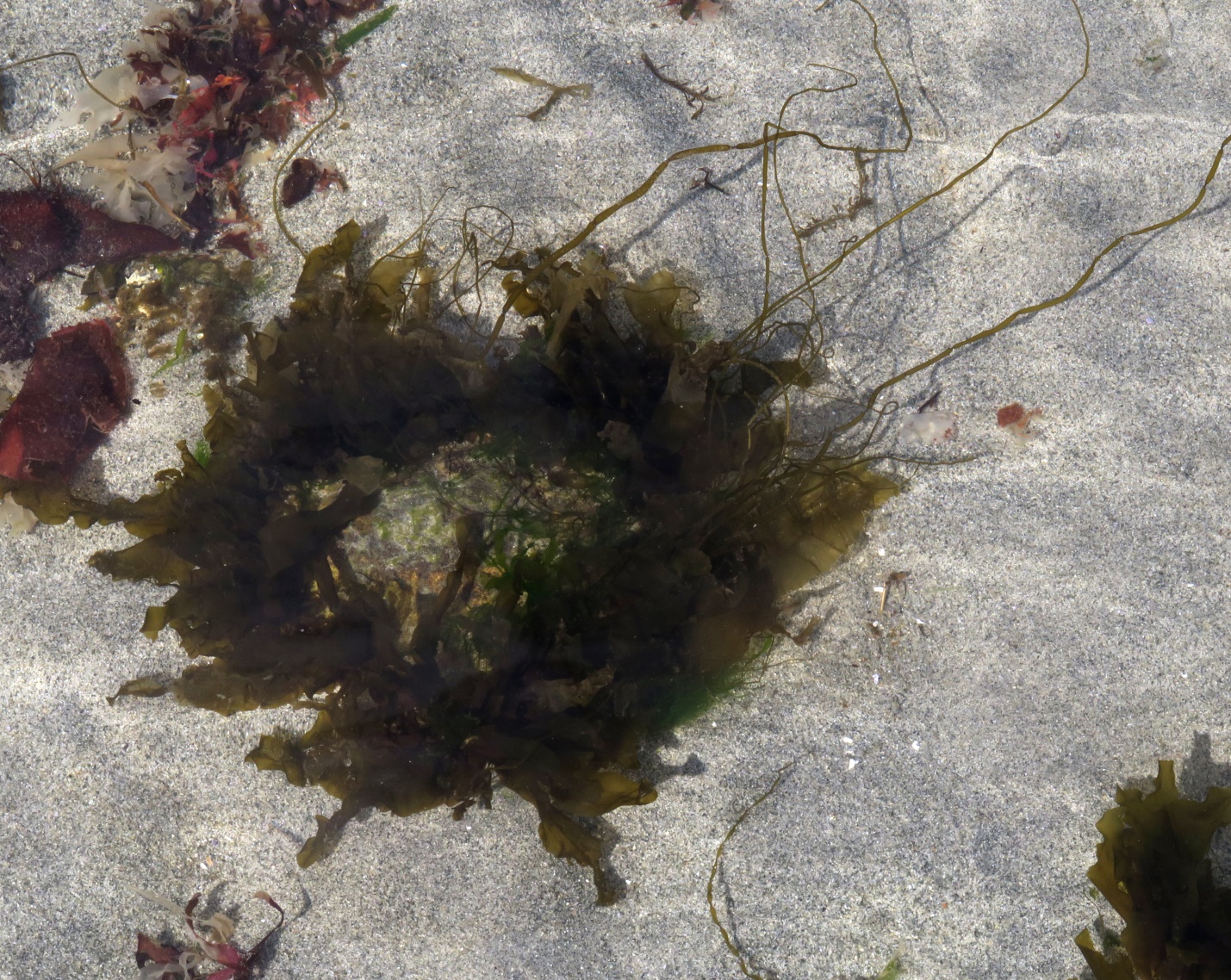
Figure 1: One partially sand-embedded cobble is seen here rimmed with Petalonia fascia thalli, plus a bit of Scytosiphon lomentaria (long thin brown tubes) and some Ulva linza (small traces of bright green) – immersed in the shallow water the ‘Sea Petals’ are making the most of the lengthening early spring daylight. Kye Bay, Strait of Georgia, B.C., Canada. March 14, 2024. Photo ID 27642 ©Seaweedwhisperings.com
Person 1:
First impression on this week’s earlier visit to the seashore: “dancing fronds around a steady stern master” (the “stern master” is the bald rock on which many Petalonias are attached). On recording these observations I realized that it took a full day to internalize and then interpret what I perceived. Maybe this seaweed is slow to recognize with conscious thought what is going on around them.
I get the feeling of a comedic, uncoordinated dance routine, as the fronds seem to only sort of move together as the water moves around their anchor rock.
Self-deprecating humor, covering up insecurity.
Want to please, but can’t find the right way to do it.
Highly disappointed when unsuccessful.
Thrive best when they can be with their buddies. Very insecure of having to go it alone.
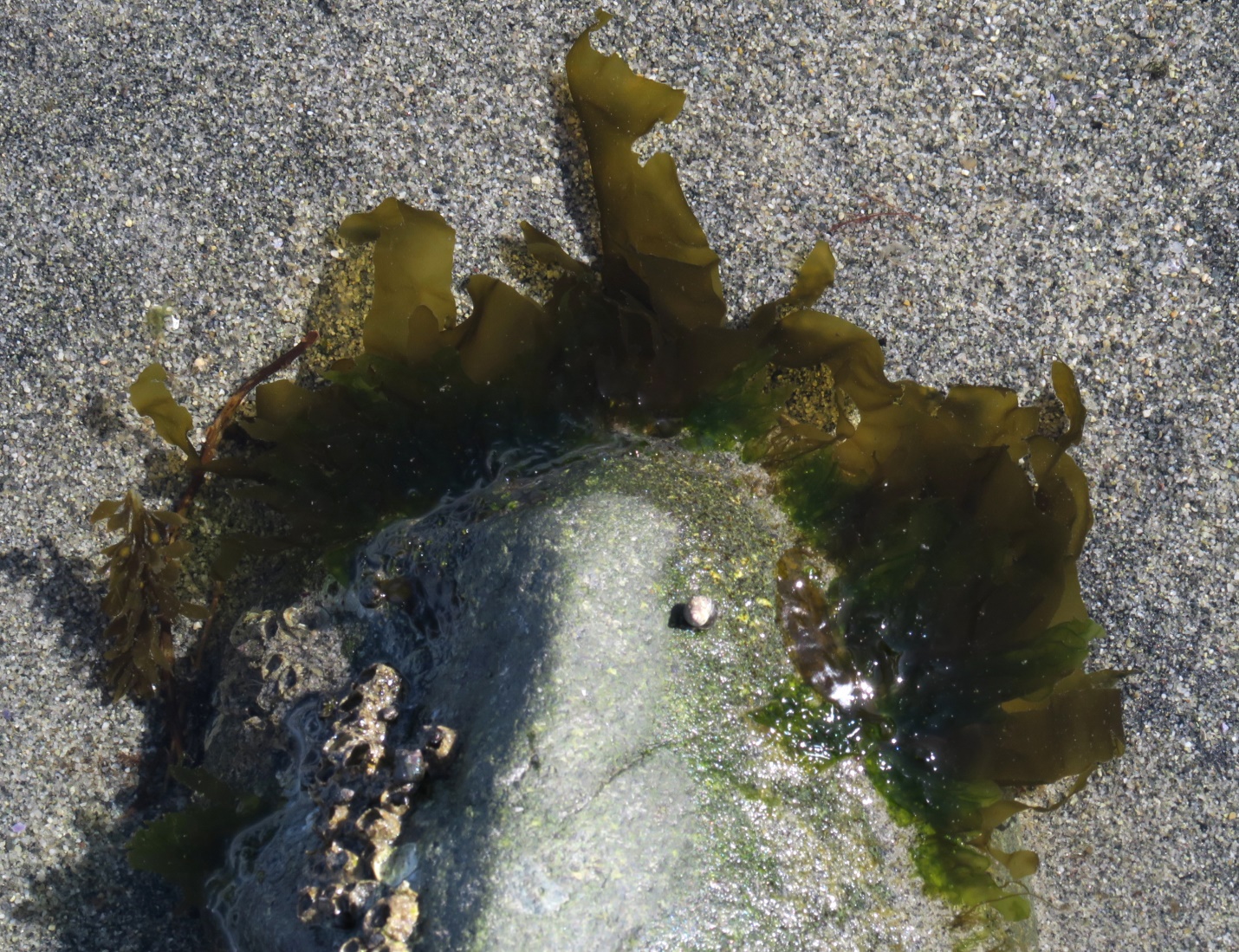
Figure 2: Another cobble and at this season and in this intertidal zone, there you will likely find more Petalonia! Kye Bay, Strait of Georgia, B.C., Canada. March 14, 2024. Photo ID 27643 ©Seaweedwhisperings.com
Person 2:
Here we are at a spring low tide and everywhere in the intertidal zone there is seaweed life, some of it torn from holdfasts and floating in the sea, and some of it newly awakened for the season and growing with enthusiasm. Petalonia fascia is a member of the second group and it is growing in abundance here in the mid intertidal zone. The beach here has much sand but also has buried cobbles. It faces the Strait of Georgia but also has some wave protection from land jutting out to sea at its perimeter.
Petalonia is “kelp brown” in color. This is a brown that is distinctive to kelps and it is not only a brown. It is brown with gold and green mixed in at varying proportions depending on the species.
Blades are translucent and uniformly colored.
This seaweed grows in clusters from holdfasts on rock cobble embedded in the sand. Often some Scytosiphon lomentaria, Ulva linza, and Acrosiphonia arcta are growing on the same cobble as Petalonia fascia but at this time in the spring season it is the Petalonia that has the largest presence. This, I know from previous visits, will be a short-lived thing, the “larger presence” of Petalonia, as just a bit later in spring we’ve found thousands of “Sea Petals” broken from their holdfasts, and floating adrift wherever the ocean currents take them.
Petalonia doesn’t mind these other seaweed neighbors – especially so long as they are not too noisy or aggressive; also it is clear that Petalonia wouldn’t tell them this request “to their face” because they are too fearful of triggering a harsh response.
I noted this trait in Petalonia and then also found it in myself; here at Kye Bay today the airplane noise (Canadian Air Force pilots practising take offs at nearby Comox Air base) is disturbing – too big, too loud, and permits no peace. (Note: on other days and with other interactions under these same conditions it has been easy to ignore the airplane sounds; so this is very much in contrast to my experience today).
When the water moves around you, you wave like golden greenish-brown flags, Petalonia; with the slightest disturbance you show it. Is this a quiver? A reaction that you cannot hide?
When the tide recedes you can do nothing but submit to gravity – flattening out on the damp sand with also a few ripples along your blade.
The feel of your wet blade surface is exquisitely smooth – strikingly so. Even though you look delicate and even tender, there is a type of distinction in this quality of smoothness; does it give you a different skill to compensate for lack of physical prowess? It does feel that your smoothness supersedes any toughness, but maybe you don’t have to be tough if your design is to encourage things to slide right off you!
When the water is still, your blades even though they are anchored closely together, manage to spread out in multiple directions. Certainly each blade has access to more light due to this habit; perhaps your very slight ruffling gives rise to all these different positions…? The movement and positioning does not seem to come from any directed strength of your own, Petalonia; it seems to be more a reaction to or a partnering with a stronger force.
I don’t think you use ‘strength’ in the typical or obvious ways, Petalonia. You do not resist, at least outwardly there is no sign of that.
You go along, you comply, and that is how you meet stronger forces or the stronger energies of others.
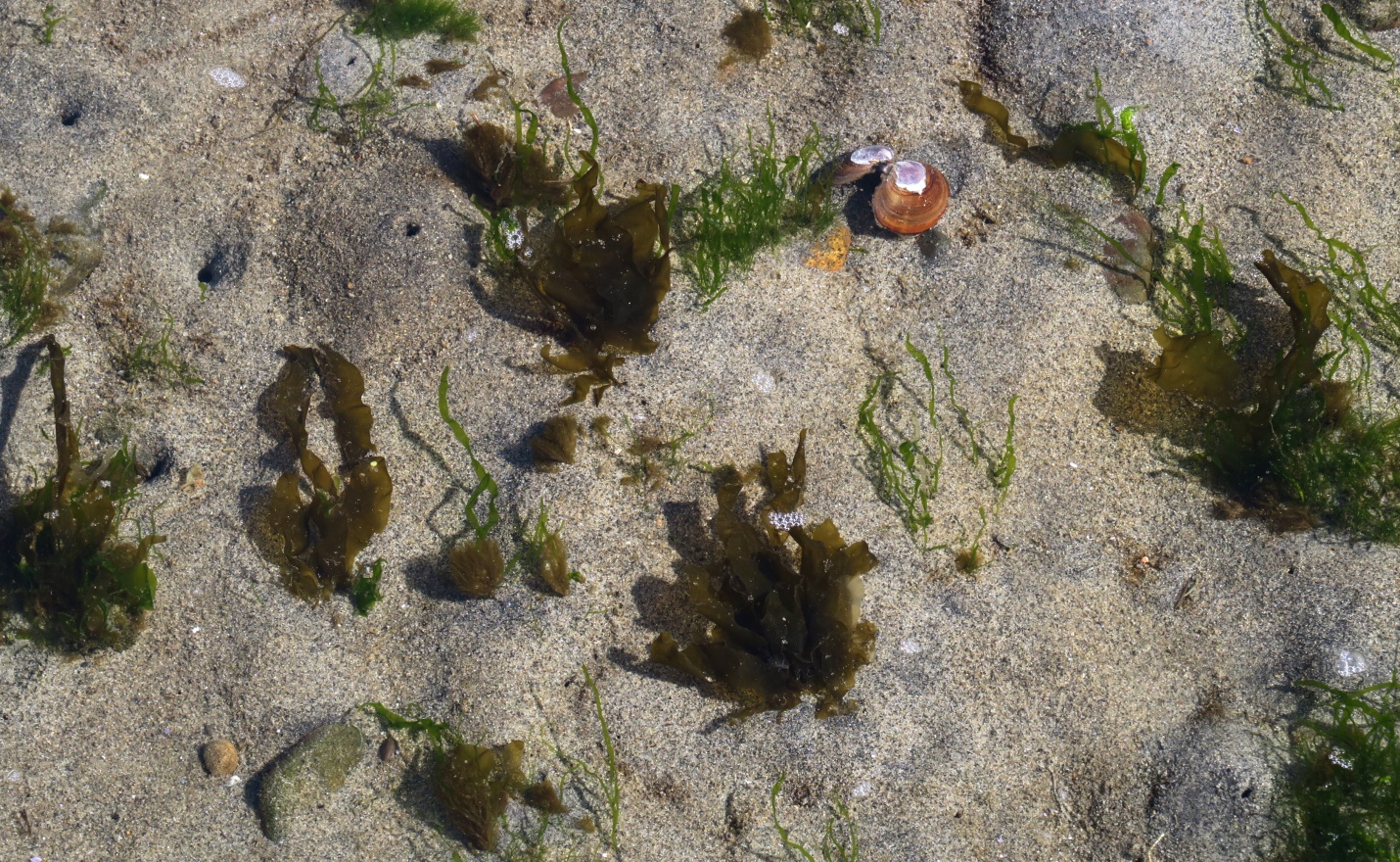
Figure 3: The groupings of brown wavy ribbon-like ‘petals’ are our seaweed of interest today, Petalonia fascia. They can look as if they are growing directly out of the sand in this setting, but in fact they are anchored to cobbles that are buried in the shifting sand. Kye Bay, Strait of Georgia, B.C., Canada. March 14, 2024. Photo ID 27644 ©Seaweedwhisperings.com
Further Observations & Impressions:
Person 1:
Thinking about a discussion with Person 2 relating to Petalonia, what I’ve been seeing with my family, especially the “Sunday Dinner Syndrome”, is that it matches the comedic dance routine noted early in my observations. This is where participants put on the pretense that everything is OK or even great, when in reality most everyone is dissatisfied in some way but can’t (or won’t) get out of “the dance” for fear of being alone or “cast out of the group”.
Person 2:
Later, when I was reviewing my photographs from today, I enlarged the view of the stipe of one blade of Petalonia I had been observing. With the magnification it was easy to see that the stipe is not round but it is flattened (and in this instance it is twisted), and even though it is short, it creates another dimension to the very simple blade of this seaweed. Like the petioles of aspen tree leaves are designed to catch the wind, this flattened area of the stipe of Petalonia may do a similar thing with the ocean movements. There is a kind of un-choreographed but easily stimulated quivering or quaking that occurs when the ocean currents ‘blow’ through the Sea Petals blades.
Petalonia has no mid rib, nothing to give strength to the blade. So the stipe possibly facilitates some ability to endure exertion or sustained activity. And the action seems very much like a flag waving in the wind, and like every other adjacent Petalonia is waving in its own ‘personal wind’. Possibly this type of ‘action’ is where Petalonia creates some effect on its surroundings.
Just a bit after our direct interactions at the seashore were over, I found myself thinking about family gatherings and group events from the past. Key to these events was the feeling of having no influence, of simply being unable to explain to others a different choice or preference; and these circumstances had led to unpleasant feelings of helplessness. It was that a declaration by another was made and it stated “participate in THIS way”; there will be no discussion on this. This relates to the Petalonia energy experienced today; this seaweed can get “all in a fluster” when it anticipates needing to do certain things in a manner that is directed by others. The movement of the blades in water shows this aspect, too, there is a lot of motion but certainly not much forward progress in any one direction.
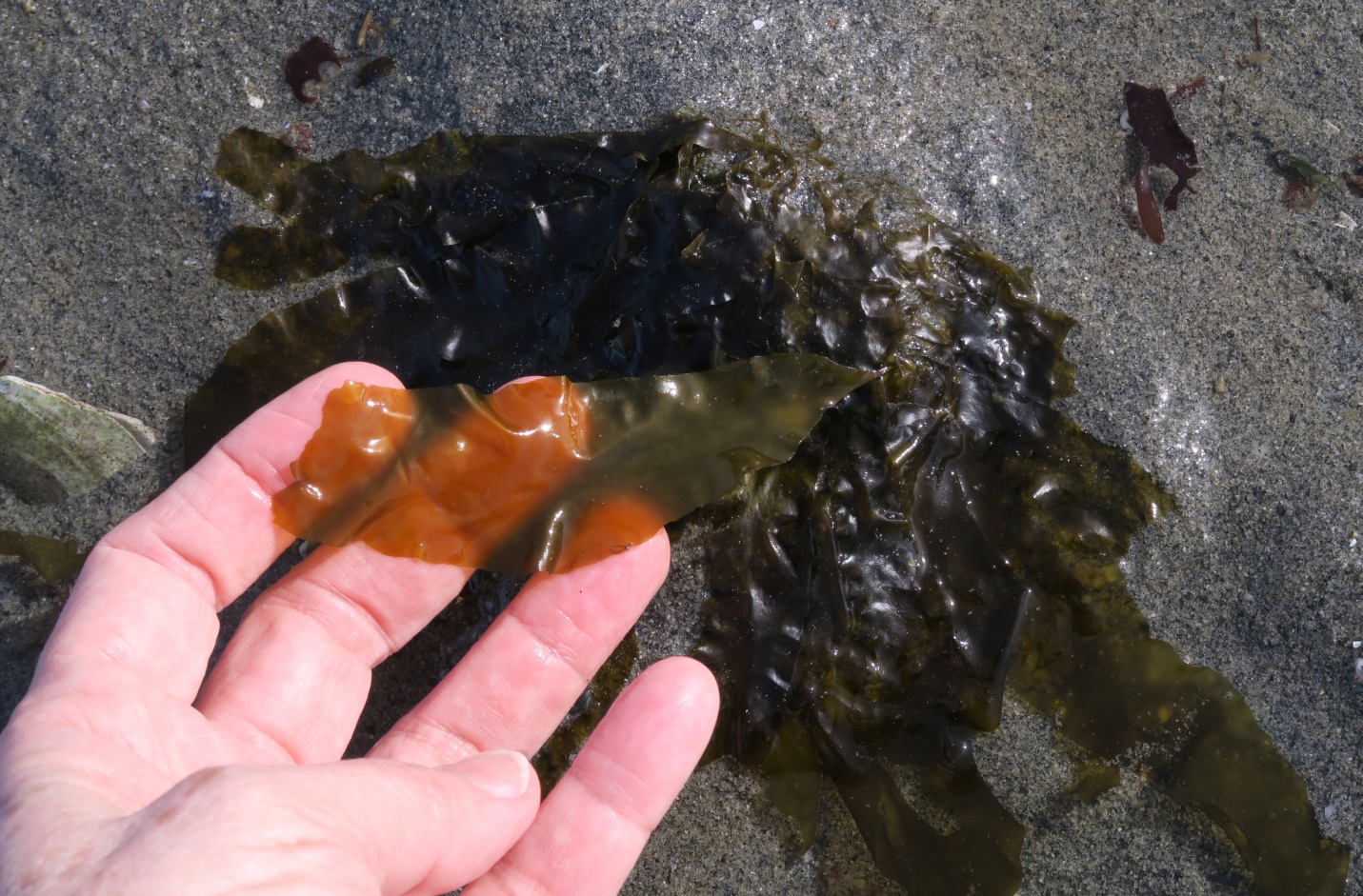
Figure 4: One thallus is held apart from the ‘flattened’ group to show the blade shape and size. Kye Bay, Strait of Georgia, B.C., Canada. March 15, 2024. Photo ID 27645 ©Seaweedwhisperings.com
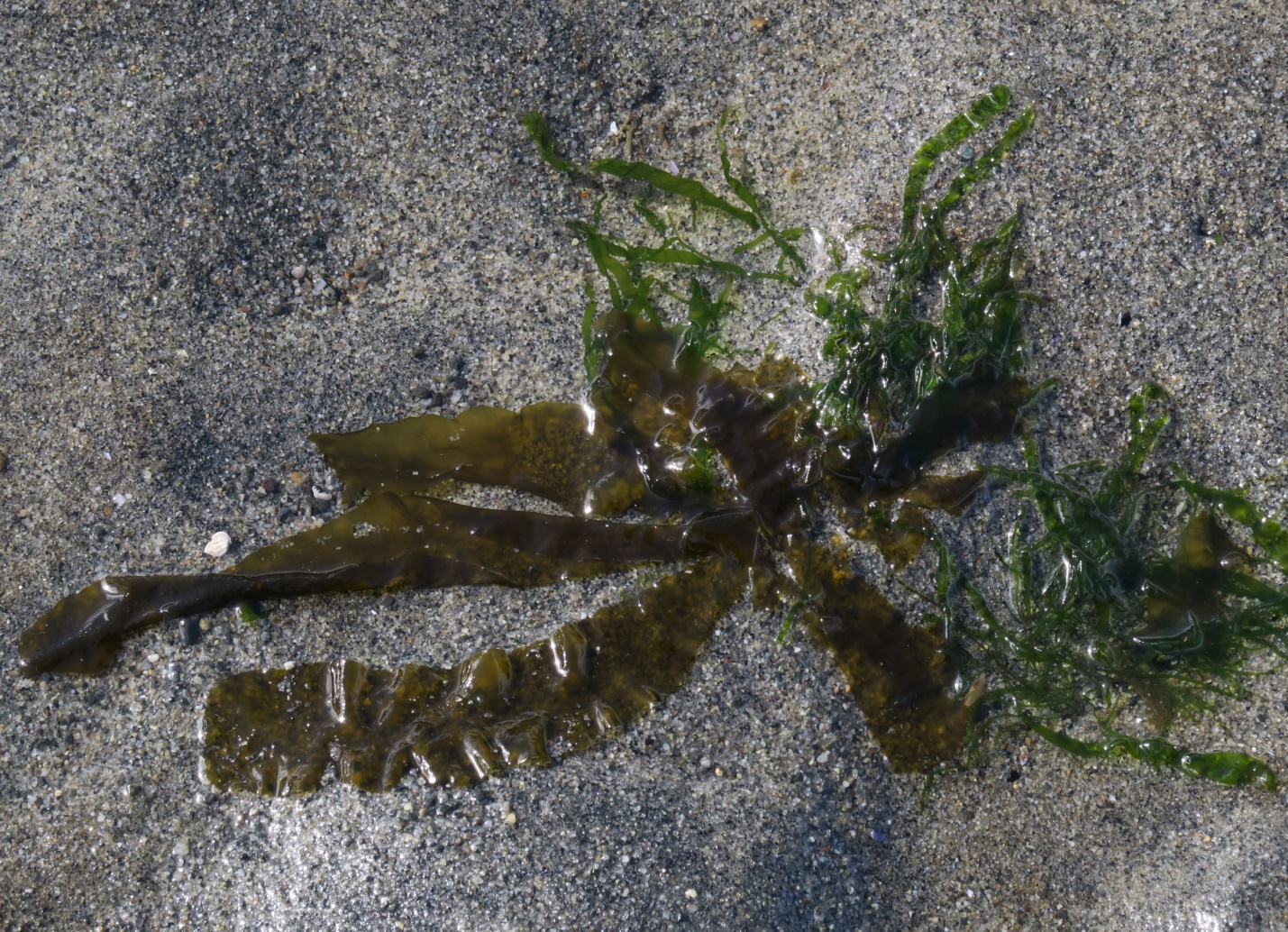
Figure 5: Like flags with no wind, the Sea Petals here are inert, lying close to the sandy substrate. The rippling of the blade margins is still apparent. Kye Bay, Strait of Georgia, B.C., Canada. March 14, 2024. Photo ID 27646 ©Seaweedwhisperings.com
Discussion:
Petalonia fascia has at least two common names; one is Sea Petals and the other is False Kelp. Both give a hint to the nature of the energy of this seaweed. This small early season brown algae certainly is “kelp colored” however it does not share the robust vitality and obvious size and strength of many of the “true” kelps. We sense that it doesn’t so much pretend to be a kelp, but is labelled as being a “poor example” or a “weak” or “small” kelp. The name Sea Petals tells of the delicate and somewhat fragile or tender nature that can be a part of this seaweed’s energy; this is not a seaweed that can endure harsh conditions or violent or aggressive circumstances. If exposed to this type of circumstance, Petalonia fascia will quickly succumb and let go of its current season’s growth; this is reminiscent of the petals that will quickly fall from a flower stalk, such as flax if it is picked or desert evening primroses when the next day’s sun grows full and hot.
One other example of this tender or fragile trait was noted very early in January of this year at Gonzales Bay where Petalonia fascia thalli were noted to be growing in the upper reaches of the mid-intertidal zone. Not ten days later the area dipped into a set of days with well below average nighttime lows and daytime high temperatures; the Petalonia blades were exposed at low tide to these freezing temperatures and they perished.
So possibly Petalonia in its attempts to avoid big, boisterous, pushy or dominant types of energies, has selected a time of year to grow when those ‘characters’ are not yet present. While it may be true that this gives Petalonia a more peaceful environment, it comes with some risks, too. Petalonia does not present as being brave or daring but in actuality chooses to set out for what it knows suits it best – and in so doing they actually do draw upon unseen reserves of courage.
Possibly the “false” nature of this seaweed comes up in how it goes along, or complies with stronger forces that they do not actually agree with; this gives a type of concealment or a way of ‘hiding out’ or ‘lurking’ in groups where Petalonia might be “testing the waters” to find any compatibility or like-mindedness.
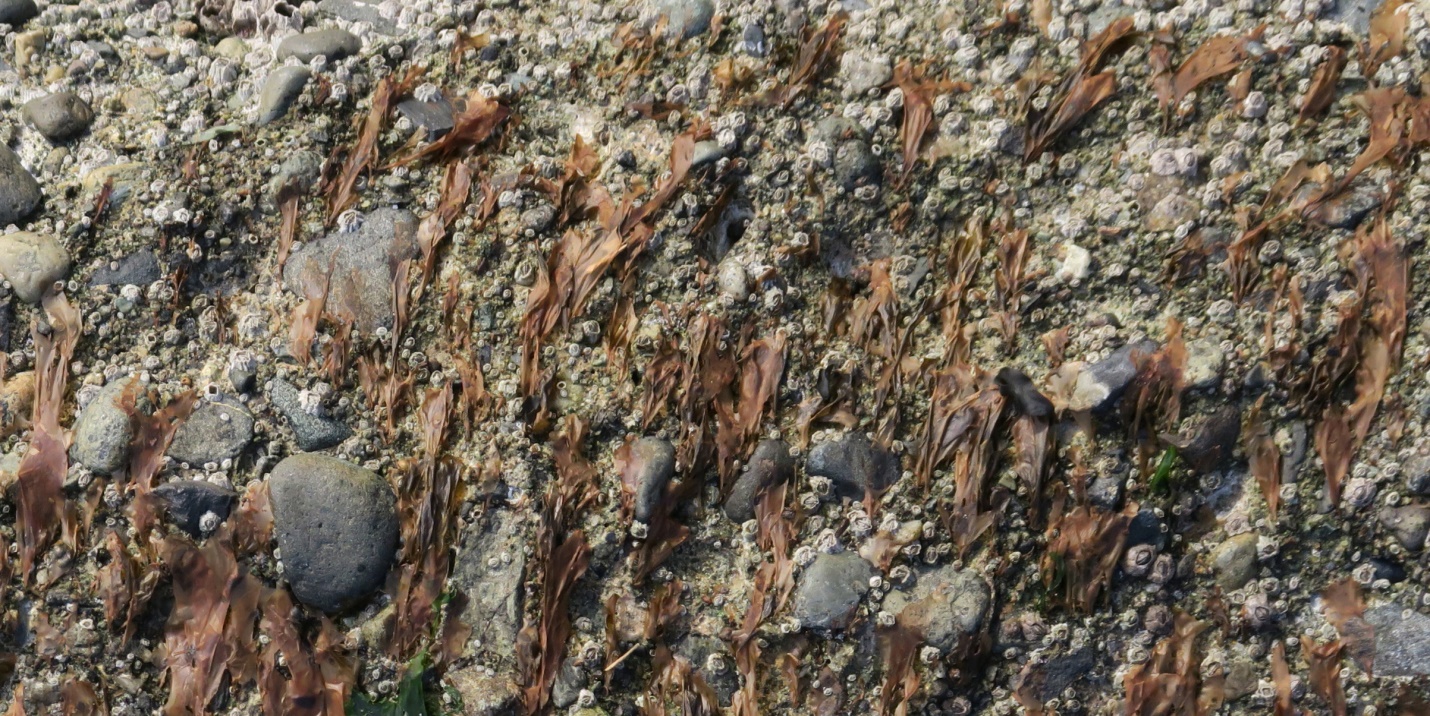
Figure 6: “Freeze-dried” individuals are documented in this photo taken much earlier in the year at another location. The Petalonia blades were growing already, just shortly past the winter solstice and were exposed to unusual cold temperatures at low tides. Gonzales Bay, Juan de Fuca Strait, B.C. Canada. January 16, 2024. Photo ID 27647 ©Seaweedwhisperings.com
Biology & Natural History Information:
Description:
This annual brown alga, False Kelp, does resemble a miniature Laminaria but has only a tiny, discoid holdfast and it lacks the complex internal cell differentiation of the true kelps. Blades can occur singly but more often in groups, are yellowish-brown or green-ish brown in color, strap-like in overall shape and taper to tiny holdfasts; they grow up to 35 cm (14 in) tall (but often is smaller). The smooth blade often has shallow ruffles along smooth margins. Although thin looking and silky soft in texture especially when young, the blade is composed of several cell layers and the inner cells are notably larger than cells of the outer layer.
Habitat:
Common on rocks, in the mid intertidal to shallow subtidal, from protected to semi-exposed habitats. It is often found growing with Scytosiphon species and this common association is the subject of ongoing studies.
North Pacific Distribution:
Arctic Ocean, Bering Sea and Aleutian Islands, Alaska, to Baja California, Mexico; China; Korea; Japan; Russia.
Remarks:
False Kelp is a springtime species that can be gone by June in British Columbia waters. Apart from the foliose phase, False Kelp also forms a crustose phase which can reach maturity quickly; this is possible as the crust phase grows when the days are long and temperatures are relatively high. Maturity of the crustose phase can be achieved in only 4 weeks. The crustose phase persists year round and functions as a residual holdfast which then forms possibly several generations of blades. The crustose phase is well adapted to adverse environmental conditions whereas the foliose blade phase has been shown to require a certain minimal concentration of iodine in the water; erect fronds in many locations are more abundant in winter and spring. Experiments carried out in Washington state have shown that the blades of false kelp are affected strongly by patchy nutrients; if ammonium is absent for a period of time but then resupplied, False Kelp will resume photosynthesis, but return to normal rates can require up to nine days. The clear seasonal occurrence of crusts in summer and blades in winter demonstrates the adaptability of this species to alter its morphological expression to environmental conditions.
Classification:
Phylum: Heterokontophyta
Subphylum: Ochrophytina
Class: Phaeophyceae
Family: Scytosiphonaceae
Genus: Petalonia
Species: Petalonia fascia (O.F.Müller) Kuntze 1898
Former name(s): Basionym: Fucus fascia O.F. Müller; Synonyms are numerous including: Ilea fascia (O.F.Müller) Fries 1835; Petalonia debilis (Kützing) Derbès & Solier 1850; Phyllitis fascia (O.F.Müller) Kützing 1843.
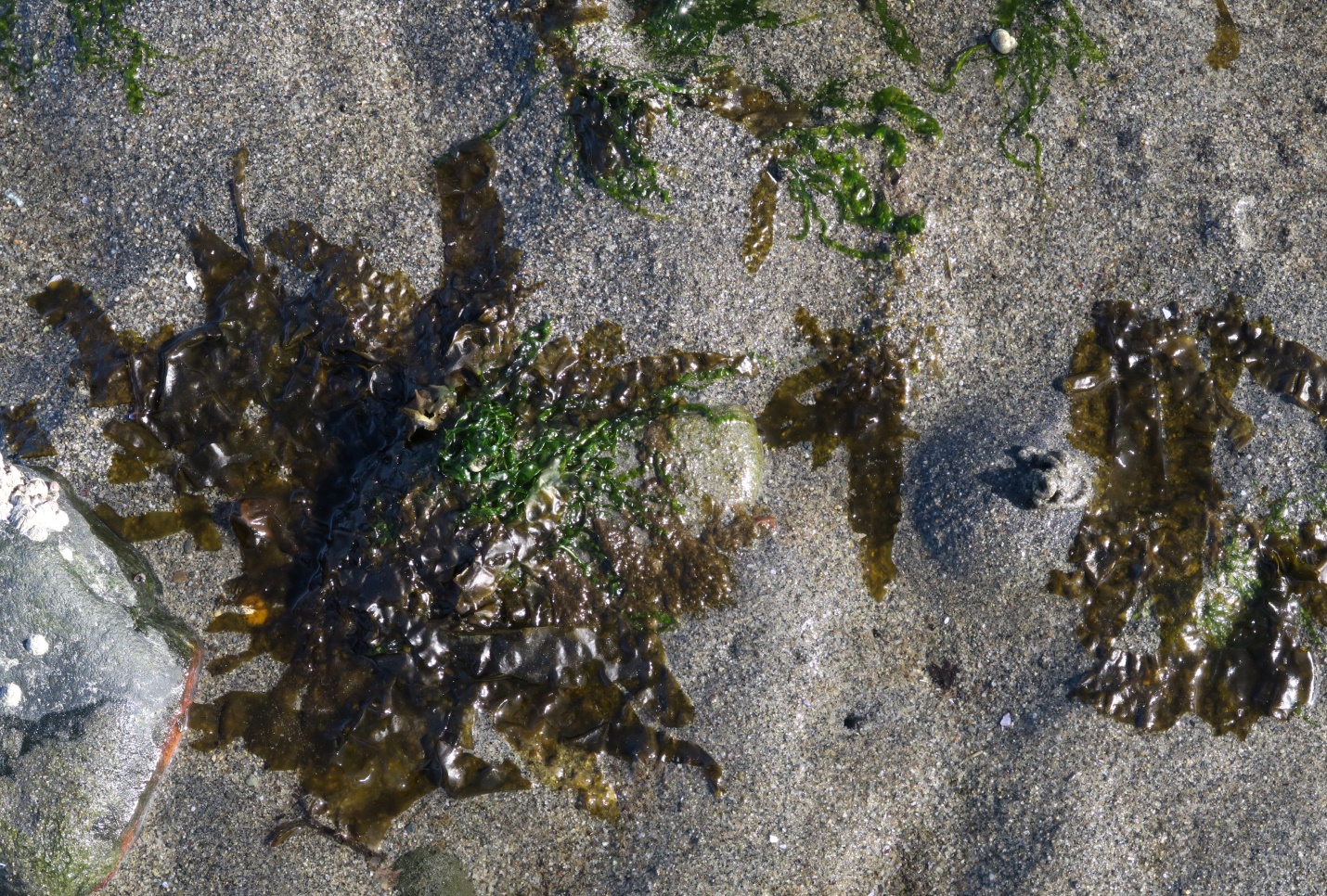
Figure 7: More groupings of False Kelp, some larger, some small – all resting on the sand and awaiting immersion with the next tide. Kye Bay, Strait of Georgia, B.C., Canada. March 15, 2024. Photo ID 27648 ©Seaweedwhisperings.com
![]()